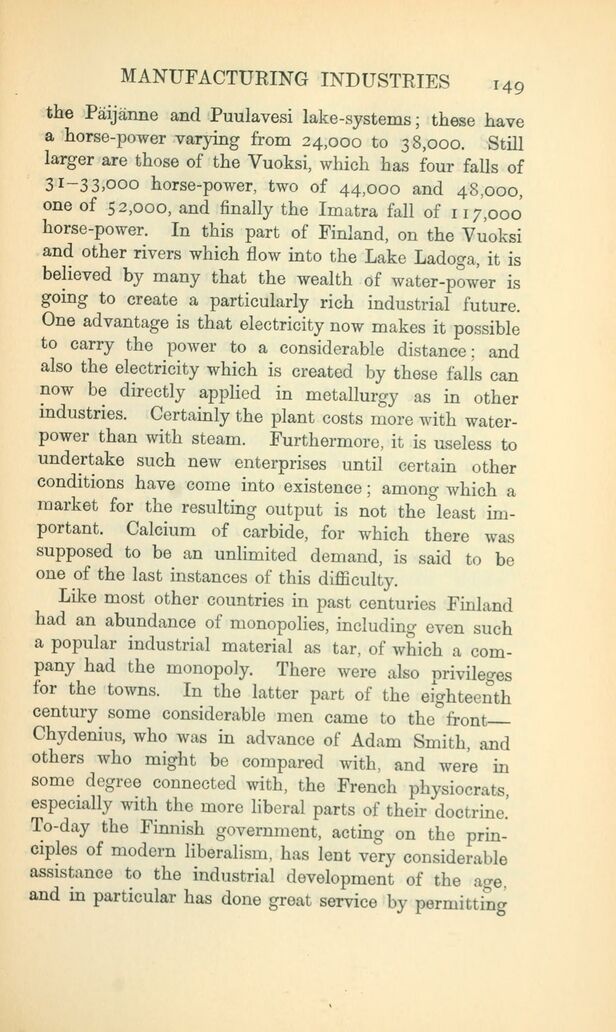
Full resolution (JPEG) - On this page / på denna sida - VI. Mining and Manufacturing Industries

<< prev. page << föreg. sida << >> nästa sida >> next page >>
Below is the raw OCR text
from the above scanned image.
Do you see an error? Proofread the page now!
Här nedan syns maskintolkade texten från faksimilbilden ovan.
Ser du något fel? Korrekturläs sidan nu!
This page has been proofread at least once.
(diff)
(history)
Denna sida har korrekturlästs minst en gång.
(skillnad)
(historik)
the Päijänne and Puulavesi lake-systems; these have
a horse-power varying from 24,000 to 38,000. Still
larger are those of the Vuoksi, which has four falls of
31-33,000 horse-power, two of 44,000 and 48,000,
one of 52,000, and finally the Imatra fall of 117,000
horse-power. In this part of Finland, on the Vuoksi
and other rivers which flow into the Lake Ladoga, it is
believed by many that the wealth of water-power is
going to create a particularly rich industrial future.
One advantage is that electricity now makes it possible
to carry the power to a considerable distance; and
also the electricity which is created by these falls can
now be directly applied in metallurgy as in other
industries. Certainly the plant costs more with
water-power than with steam. Furthermore, it is useless to
undertake such new enterprises until certain other
conditions have come into existence; among which a
market for the resulting output is not the least
important. Calcium of carbide, for which there was
supposed to be an unlimited demand, is said to be
one of the last instances of this difficulty.
Like most other countries in past centuries Finland
had an abundance of monopolies, including even such
a popular industrial material as tar, of which a
company had the monopoly. There were also privileges
for the towns. In the latter part of the eighteenth
century some considerable men came to the front —
Chydenius, who was in advance of Adam Smith, and
others who might be compared with, and were in
some degree connected with, the French physiocrats,
especially with the more liberal parts of their doctrine.
To-day the Finnish government, acting on the principles
of modern liberalism, has lent very considerable
assistance to the industrial development of the age,
and in particular has done great service by permitting
<< prev. page << föreg. sida << >> nästa sida >> next page >>